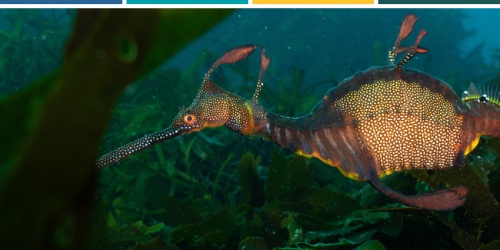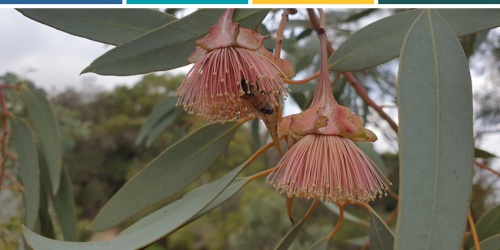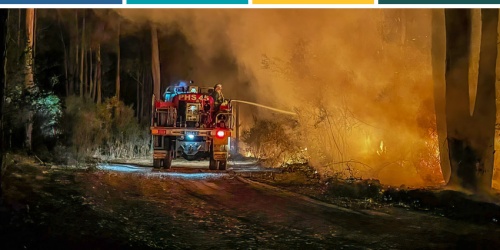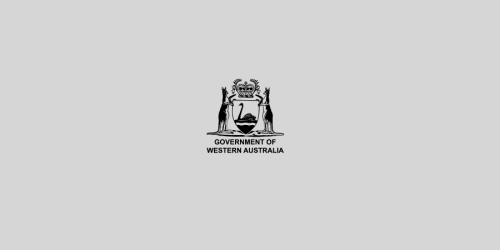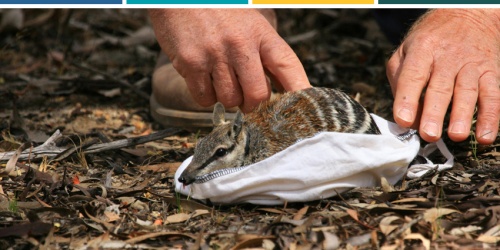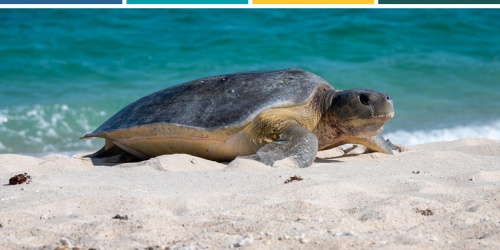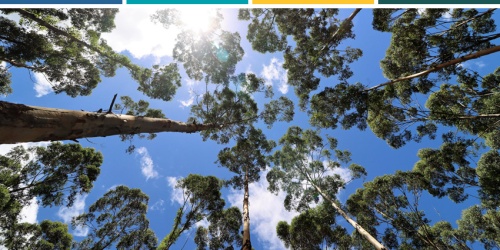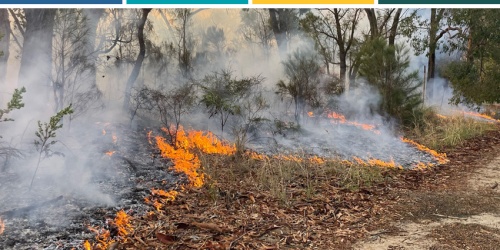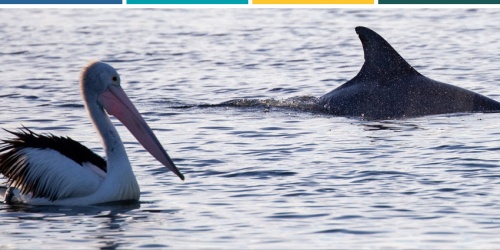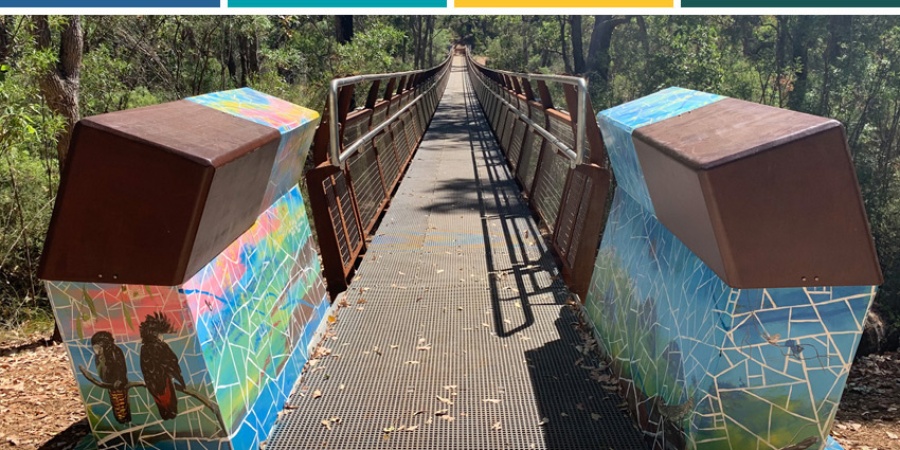
Service 5 is responsible for the generation of environmental, social, cultural and economic benefits through further development of a world-class parks system in terms of ecosystem management and visitor facilities and services.
Performance summary
Table 3: Service 5 performance summary
| 2021–2022 target | 2021–2022 actual | Variance | |
|---|---|---|---|
| Expenses by service | $148,539,000 | $130,425,000 | ($18,114,000) |
| Key efficiency indicator | |||
| Average cost per hectare in national parks and other land and water | $4.60 | $4.13 | ($0.47) |
| Key effectiveness indicator | |||
| Average level of visitor satisfaction in national parks and other land and water | 90% | 94.57% | 4.57% |
More information on these indicators can be found on the Disclosures and legal compliance page in the downloads section.
Park visitor statistics
The 2021–22 visitor satisfaction index, averaged from visitor responses to surveys at selected parks, reserves and forest areas across the State, was 94.6 per cent. This outcome, with results from previous years of the survey program, is illustrated in Figure 1.
Figure 1: Visitor satisfaction levels within Parks and Wildlife Service-managed land and water
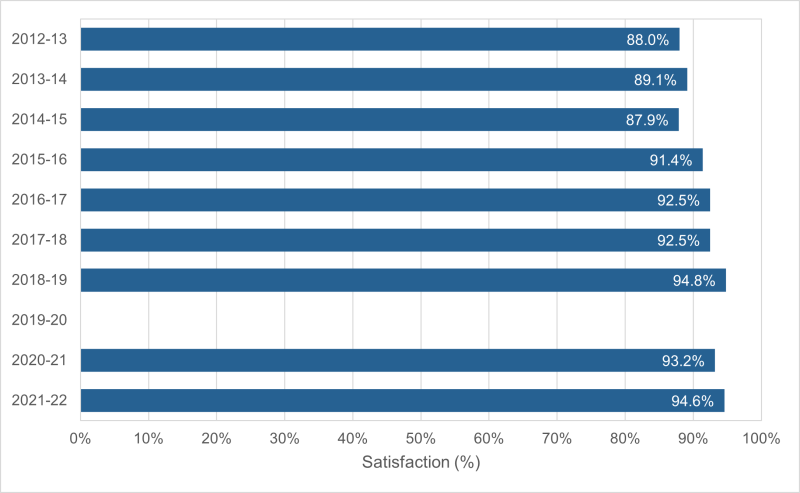
Note: In 2019–20 an exemption from reporting ‘Average level of visitor satisfaction in national parks and other land and water’ was granted due to the impact of COVID-19.
During 2021–22, there were 22.65 million visits to Parks and Wildlife Service-managed land and water, an increase from 21.56 million last year (Figure 2). Most regions saw an increase in visitation, with the Kimberley and Wheatbelt regions seeing the largest proportional increases.
Figure 2: Total visits to Parks and Wildlife Service-managed land and water
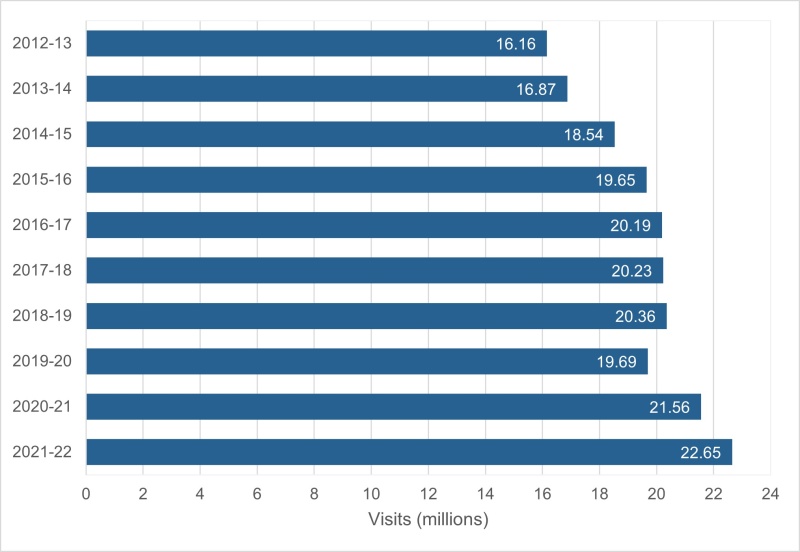
Note: Data in this graph is taken from the department’s Visitor Statistics (VISTAT) database and is a true and correct record of best available data at the time of reporting. As VISTAT is a live database, corrections and amendments are made on an ongoing basis meaning figures presented here may differ from those in previous reports.
During 2021–22, there were 115,500 bookings for the 1995 campsites managed by the Parks and Wildlife Service, an increase from 104,700 last year (Figure 3).
The increase is likely due to Western Australian residents continuing behaviours to explore parks in their own State as a result of COVID-related border restrictions. Additionally, 84 more campsites have been made available on the online booking system.
Figure 3: Total campground bookings at Parks and Wildlife Service-managed campgrounds
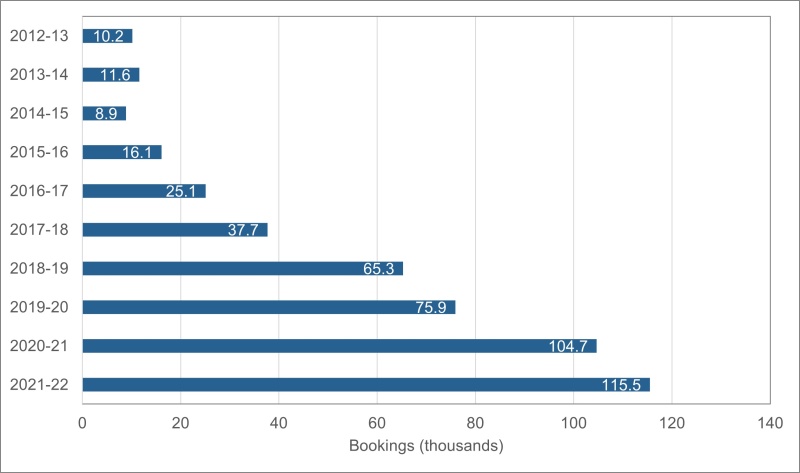
Performance highlights
Plan for Our Parks
- To date, 467,342 hectares of reserves have been created under Plan for Our Parks (PfOP).
- In November 2021 Wellington National Park was expanded by 7,378 hectares.
- In December 2021, Thundelarra Conservation Park (100,107 hectares) was created in the Midwest Region within Badimia country.
- In April 2022, Warlibirri National Park (15,894 hectares) was created. It covers areas of the Margaret River east of Fitzroy Crossing in the Kimberley and is jointly managed by the department and Gooniyandi Aboriginal Corporation.
- In partnership with traditional owners and the Department of Primary Industries and Regional Development (DPIRD), the department began extensive public consultation processes for a proposed marine park on the south coast, and the review and expansion of Marmion Marine Park on the Perth coast.
- The department continues to work towards the State Government’s goal of creating five-million-hectares of new national and marine parks and conservation reserves.
Creation of other national parks
- In January 2022, Dryandra Woodland National Park (17,870 hectares) was created, the first national park for the Wheatbelt Region and containing important conservation habitat for the State animal emblem, the numbat (Myrmecobius fasciatus).
- In March 2022, a national park at Mungada Ridge (1,031 hectares) was created and is jointly vested with the Bundi Yamatji Aboriginal Corporation and the Conservation and Parks Commission. The creation of this park fulfils a commitment under the Yamatji Nation Indigenous Land Use Agreement.
Tourism and accommodation
- The department continued to support the tourism industry through the impact of COVID-19 by completing implementation of the State Government’s licence fee waivers and rent relief initiatives.
- New tourism proposals continued to be assessed and progressed in parks around Western Australia. These included the grant of a lease for a new ropes course at Gloucester Tree near Pemberton and a competitive process to identify a new tourism opportunity in Wellington National Park associated with the Collie Adventure Trails initiative.
- The department continued liaison with proponents on concepts received under the Market-Led Proposals Policy, for a ropes course at Gnangara Park, nature-based tourism accommodation in Porongurup National Park and self-contained eco-accommodation at two yet to be confirmed sites.
- Additional improvements were made to licensing processes for commercial events and filming.
- A program of cultural talks – Discover the Dreaming – began in partnership with Aboriginal tour operators and will be expanded in parks around the State.
Recreation and trails
- Work was carried out on a number of trail projects funded through the WA Recovery Plan, 2021 election commitments and the department’s capital works program, including:
- Collie Adventure Trails
- Dwellingup Adventure Trails and Dwellingup Gap Trails
- Great Southern Adventure Trails
- John Forrest National Park walk and cycle trails
- Goat Farm and Kalamunda Circuit mountain bike trails
- Wooditjup mountain bike trails near Margaret River
- Nannup mountain bike trails
- Bibbulmun Track and Munda Biddi Trail facilities, campsites and trail sections.
The department continued implementing the:
- Eight and a half-million dollar, three-year Dwellingup Adventure Trails initiative jointly funded with the Shire of Murray through the Australian Government’s Building Better Regions fund and the $2.7 million State Government election commitment, Dwellingup Gap Trails. Works completed in 2021–22 included:
- sealing the main tourist road through Lane Poole Reserve
- constructing the 21km Dwellingup Town Trails network
- upgrading the Marrinup and Turners Hill mountain bike networks.
- Ten-million dollar, four-year Collie Adventure Trails and $3.1 million Collie Tourism Readiness and Economic Stimulation initiatives in partnership with the Shire of Collie. Works carried out in 2021–22 included:
- constructing the five-day, four-night Wiilman Bilya Walk Trail around Wellington Dam, including the new Kaniyang Wiilman suspension bridge over the Collie River
- expanding and upgrading Wellington Dam carpark
- building 15km of mountain bike trails at Wellington National Park
- upgrading 14km of mountain bike trails at Mount Lennard
- constructing the 10km Westralia loop trail in Westralia Conservation Park near Collie
- completing the Wagyl Biddi Drop Zone and Skills Park
- developing digital and on-site wayfinding and interpretation material.
- Fifteen-million dollar Great Southern Adventure Trails initiative. Works completed in 2021–22 included:
- upgrading Castle Rock Walk Trail, Porongurup National Park
- constructing a new dual-use trail in William Bay National Park
- extending and upgrading the trail in Harewood Forest, near Denmark
- starting an upgrade of Bald Hill Walk Trail, in Torndirrup National Park.
- The department also continued to work with key recreation bodies to develop and implement strategic planning initiatives.
Improving facilities
- As part of the WA Recovery Plan, $9.81 million was invested upgrading existing visitor access and facilities. Works completed in 2021–22 included:
- upgrading Fitzroy Crossing and Dwellingup work centres
- upgrading the homestead precinct at Thundelarra Conservation Park
- improving and adding visitor facilities at Shell Beach, Shark Bay World Heritage Area
- adding new visitor facilities at Dales Campground, Karijini National Park
- upgrading access roads at Dunn Rocks, Cape Le Grand National Park, and along the Nyinggulu (Ningaloo) Coast
- upgrading and expanding carparking, and adding new visitor facilities, at Redgate Beach and Rabbit Hill, Leeuwin-Naturaliste National Park
- upgrading river access stairs at Honeymoon Pool, Wellington National Park
- adding a winter enclosure on Penguin Island, Shoalwater Islands Marine Park
- upgrading restrooms at Gloucester Lodge, Yanchep National Park
- replacing boardwalks at Lake Goegrup Nature Reserve and Herdsman Lake Regional Park.
- As part of 2021 election commitments, $4.63 million was invested upgrading existing visitor access and facilities. In 2021–22, significant progress was made on:
- a boat gangway and floating jetty at Danggu (Geikie Gorge) National Park
- designing a new Park Hub and associated infrastructure at John Forrest National Park
- new accessible paths at the Goat Farm, Greenmount National Park and Lake Kepwari, near Collie.
- Using department capital funds, the department upgraded or replaced visitor facilities in various parks and reserves including:
- dual-use paths at Kalgoorlie Arboretum
- visitor facilities at Dick Perry and Wilbinga reserves
- a suspension bridge over the Murray River
- a second carpark at Castle Rock, Porongurup National Park
- new jetties at East Wallabi and Beacon islands, Houtman Abrolhos Islands National Park
- Collie Scenic Drive, as part of the Collie-Preston roads upgrades project.
- Works using department capital funds also commenced on:
- strut replacements at the Valley of the Giants Tree Top Walk
- a new visitor centre in Purnululu National Park
- improving visitor facilities and access at Nyinggulu (Ningaloo) Coastal Reserves
- a new campground and recreation area at the northern shore of Lake Kepwari.
- The department continued managing its 34,500km road network, with works in 2021–22 including:
- sealing the main tourist road in Lane Poole Reserve
- replacing 11 old timber bridges with pre-cast concrete modular bridges.
Management planning
- Two Conservation and Land Management Act 1984 (CALM Act) management plans were released for implementation:
- Kalgulup Regional Park management plan 2021
- Wheatbelt Region parks and reserves management plan 2021.
- Two proposed amendments to CALM Act management plans were released for public comment:
- Walpole Wilderness and Adjacent Parks and Reserves management plan 2008
- Murujuga National Park management plan 2013.
Aboriginal Ranger Program
- The department continued to strengthen 24 Aboriginal ranger organisations, investing the remaining $6 million of the $20 million Aboriginal Ranger Program election commitment made in 2017.
- A delivery framework was developed for the $50 million expansion of the program, which was a 2021 election commitment. Funding will be delivered through three streams over four years, targeted at ranger groups in varying stages of development and operation. The streams will support:
- new and emerging groups through the $14 million Development Fund
- established groups under the $22.8 million Expansion Fund
- innovative projects and pilots with a partnership focus through the $7 million Innovation Fund.
- Four-million dollars from the expanded program was allocated to boost program coordination and capacity building at the regional level, and another $2.2 million is being directly invested into rangers under joint management projects for the Badimia conservation reserves and Thundelarra Conservation Park.
- An expert advisory group was established to co-design the $50 million expansion and provide ongoing guidance during its implementation.
- The department launched the first funding round under the Expansion Fund (Round 4), which resulted in $22.8 million being allocated across 14 ranger programs statewide. This funding will support 57 full-time equivalent positions for up to four years.
- The Minister for Environment approved one-off funding under the Innovation Fund for the South West Aboriginal Land and Sea Council to deliver the Metropolitan Noongar Ranger Program pilot project over 18 months. This is the first project funded in the metropolitan area under the Aboriginal Ranger Program.
- The department completed its three-year evaluation of social outcomes from the program. Findings highlighted the significant positive impact the program has had on individuals and Aboriginal communities, especially women in remote communities.
Volunteer and community engagement
- At 30 June 2022, there were 12,402 volunteers registered with the Parks and Wildlife Service. Of these, 6241 contributed 871,784 hours to 217 volunteer projects across the State including campground hosting, collecting seeds, clearing weeds, wildlife rehabilitation, animal surveys, terrestrial and marine plant surveys and track, trail and park maintenance.
- In 2021–22 the department registered 1626 new volunteers and created 10 new volunteer projects, including Know Your Patch, Friends of Hawkesvale Nature Reserve, Turquoise Coast Flora Surveys and a Marine Debris Program. The department also continues to work closely with numerous ‘Friends of’ and four-wheel-drive groups, major wildlife rehabilitation centres and other community-based organisations.
- The Campground Host Program had 299 volunteers at 62 sites, helping visitors and conducting maintenance.
- Volunteer recognition funding provided more than 1100 volunteers with uniforms, 292 volunteers with specialist training including first aid, wildlife awareness and weed identification. Six-hundred and fifty volunteers across 27 groups in all regions received funding to update worn tools or purchase equipment to make their tasks more efficient, while more than 250 volunteers benefitted from funding for recognition events.
- The Wildcare Helpline’s 22 volunteers contributed 6500 hours answering approximately 10,000 calls related to sick or injured native wildlife, while approximately 1627 wildlife rehabilitation volunteers provided 398,000 hours of care for native wildlife.
- The State Government began the new $2 million Accessible Parks WA initiative in partnership with Nature Play WA and Break the Boundary. In April 2022, Nature Play WA launched the Every Kid in a Park project, which aims to connect children with disabilities to the Western Australian conservation estate. Break the Boundary is working to investigate options to develop two regional hubs for people with disability to access trail networks.
- Redeveloped and launched the Explore Parks WA website and the Park Stay WA campground booking system.
World and National Heritage management
- The department continued to work in partnership with the Murujuga Aboriginal Corporation to prepare a World Heritage nomination for the Murujuga Cultural Landscape. The nomination remained on track for submission to the UNESCO World Heritage Centre before the 1 February 2023 deadline.
